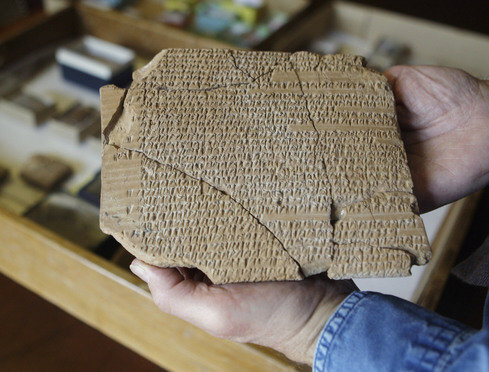The U.S. needs to return all Achaemenid tablets to Iran: envoy

TEHRAN – Majid Takht-Ravanchi, Iran’s ambassador to the United Nations, has said that the United States must return all Achaemenid clay tablets without any exceptions and excuses.
Iranian officials must get their hands on all Achaemenid tablets quickly and without argument from the United States, IRNA quoted Takht-Ravanchi as saying on Tuesday.
About 90 years ago, Achaemenid tablets were loaned to the Oriental Institute of the University of Chicago for a three-year period, and have not been fully returned since then, the official added.
Despite the fact that these tablets are part of the culture and history of Iran and belong to its people, the U.S. continually delays returning them, he noted.
The Iranian request is clear, he said, adding that they want their tablets promptly, safely, and in a timely manner returned.
In 2019, hundreds of Achaemenid clay tablets and related fragments, which were on loan from Iran to the Oriental Institute of the University of Chicago since 1935, were returned home. However, the Institute still has some of these tablets.
In February 2018, and following years of ups and downs, the fate of those ancient Persian artifacts, was left in the hands of a U.S. Supreme Court, which ruled in favor of Iran.
Archaeologists affiliated with the University of Chicago discovered the tablets in the 1930s while excavating in Persepolis, the ceremonial capital of the Persian Empire. However, the institute has resumed work in collaboration with colleagues in Iran, and the return of the tablets is part of a broadening of contacts between scholars in the two countries, said Gil Stein, director of the Oriental Institute at the University of Chicago.
The tablets reveal the economic, social, and religious history of the Achaemenid Empire (550-330 BC) and the larger Near Eastern region in the fifth century BC.
The Achaemenid [Persian] Empire was the largest and most durable empire of its time. The empire stretched from Ethiopia, through Egypt, to Greece, to Anatolia (modern Turkey), Central Asia, and to India.
The royal city of Persepolis ranks among the archaeological sites which have no equivalent, considering its unique architecture, urban planning, construction technology, and art. Persepolis, also known as Takht-e Jamshid, whose magnificent ruins rest at the foot of Kuh-e Rahmat (Mountain of Mercy) is situated 60 kilometers northeast of the city of Shiraz in Fars province.
The city was burnt by Alexander the Great in 330 BC apparently as revenge to the Persians because it seems the Persian King Xerxes had burnt the Greek City of Athens around 150 years earlier. The city’s immense terrace was begun about 518 BC by Darius the Great, the Achaemenid Empire’s king. On this terrace, successive kings erected a series of architecturally stunning palatial buildings, among them the massive Apadana palace and the Throne Hall (“Hundred-Column Hall”).
This 13-ha ensemble of majestic approaches, monumental stairways, throne rooms (Apadana), reception rooms, and dependencies is classified among the world’s greatest archaeological sites. Persepolis was the seat of the government of the Achaemenid Empire, though it was designed primarily to be a showplace and spectacular center for the receptions and festivals of the kings and their empire.
ABU/
